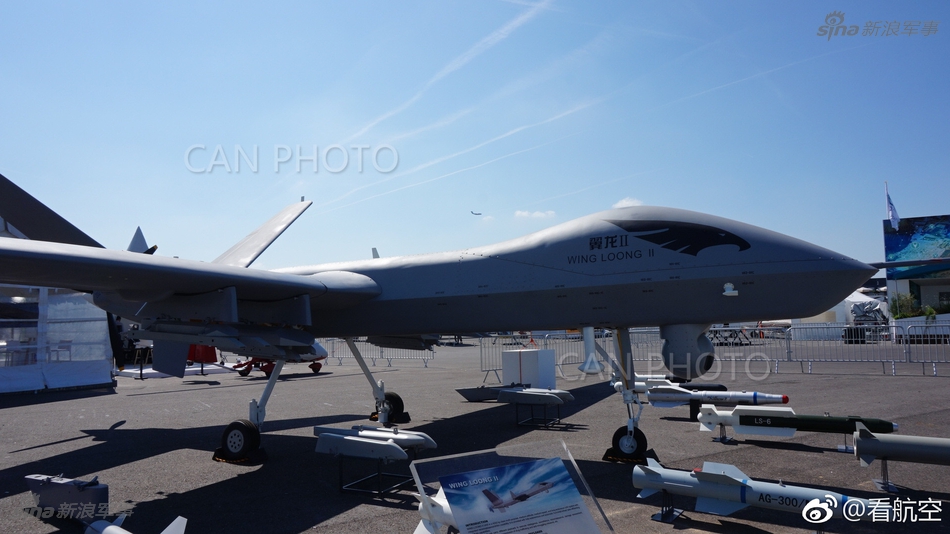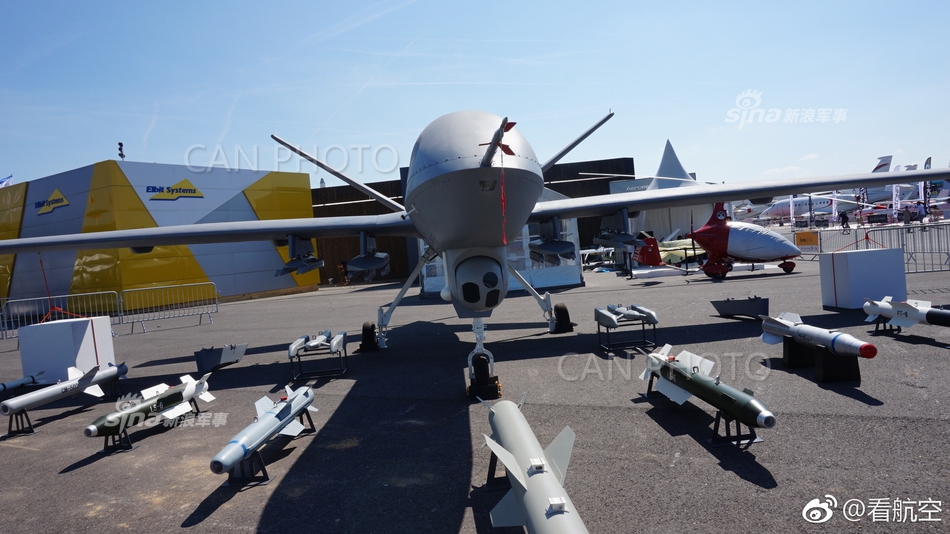China’s UAVs are selling well in Asia and the Middle East
It was not the most dynamic of exhibits on display at this year’s Paris Air Show, but the unexpected appearance of a Chinese-built armed UAV in the static display is perhaps a reminder that China’s unmanned systems are beginning to grab a significant chunk of the international export market.
A full-scale mock-up of the Wing Loong II below, the latest UAV design to emerge from the Chengdu Aircraft Industry division of Avic, surrounded by a large number of indigenously developed weapons, attracted significant attention at Paris.
Regular air show visitors are now familiar with the lineup of scale models of these platforms in booths, but the display of a full-scale model at a major Western trade show clearly demonstrates China’s growing confidence in its unmanned capabilities.
The model was on display at an aerospace fair in Mexico in April.
The Wing Loong II, which flew for the first time in February, clearly bears more than a passing resemblance to the
/Predator B platform and was developed from the Wing Loong I that first flew in 2009, which was clearly a clone of the
Predator.
Weighing in at 4,200 kg (9.260 lb.), the Wing Loong II is able to carry a maximum payload of around 480 kg, Avic says.
At Le Bourget, the aircraft was displayed with a number of Chinese-indigenous weapons, including the YJ-9E anti-ship missile, the Blue Arrow 7, TL-2 and AG-300 air-to-ground missiles and the LS-9 small-diameter bomb.
A reluctance to sell advanced unmanned air systems by previous U.S. administrations to some of its closest allies in the Middle East has proved to be a blessing for Chinese industry, which has sold its systems in bulk there as well as to a number of former Soviet republics.
Egypt, Iraq and Saudi Arabia have bought the China Aerospace Science & Technology Corp. (CASC) CH-4 system; Iraq has used the platforms against the self-proclaimed Islamic State group, while Saudi Arabia has been using them against the Houthi rebels in Yemen. In March, it was announced that CASC might open a factory to build as many as 300 CH-4 systems for the Saudi armed forces over the coming years.











